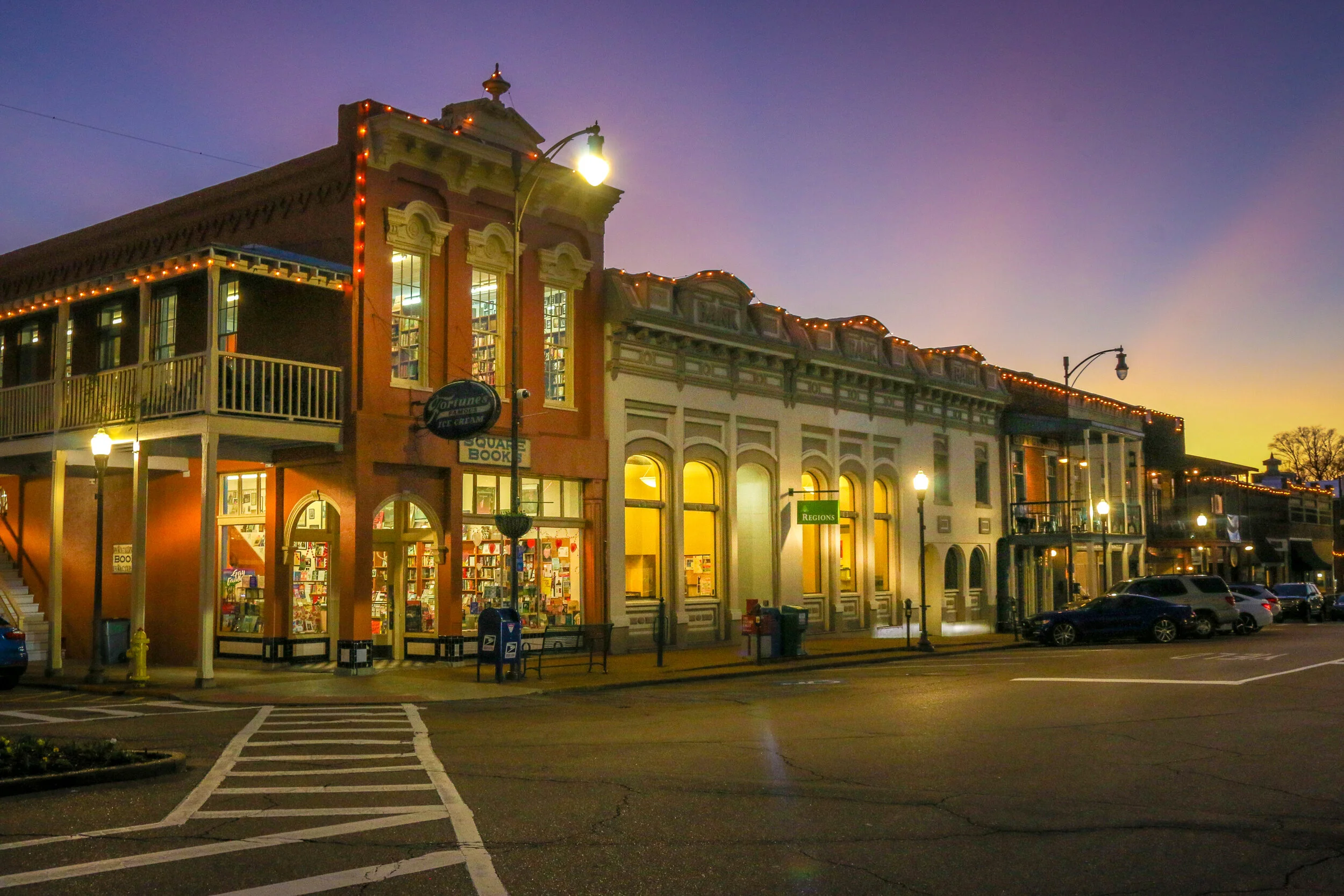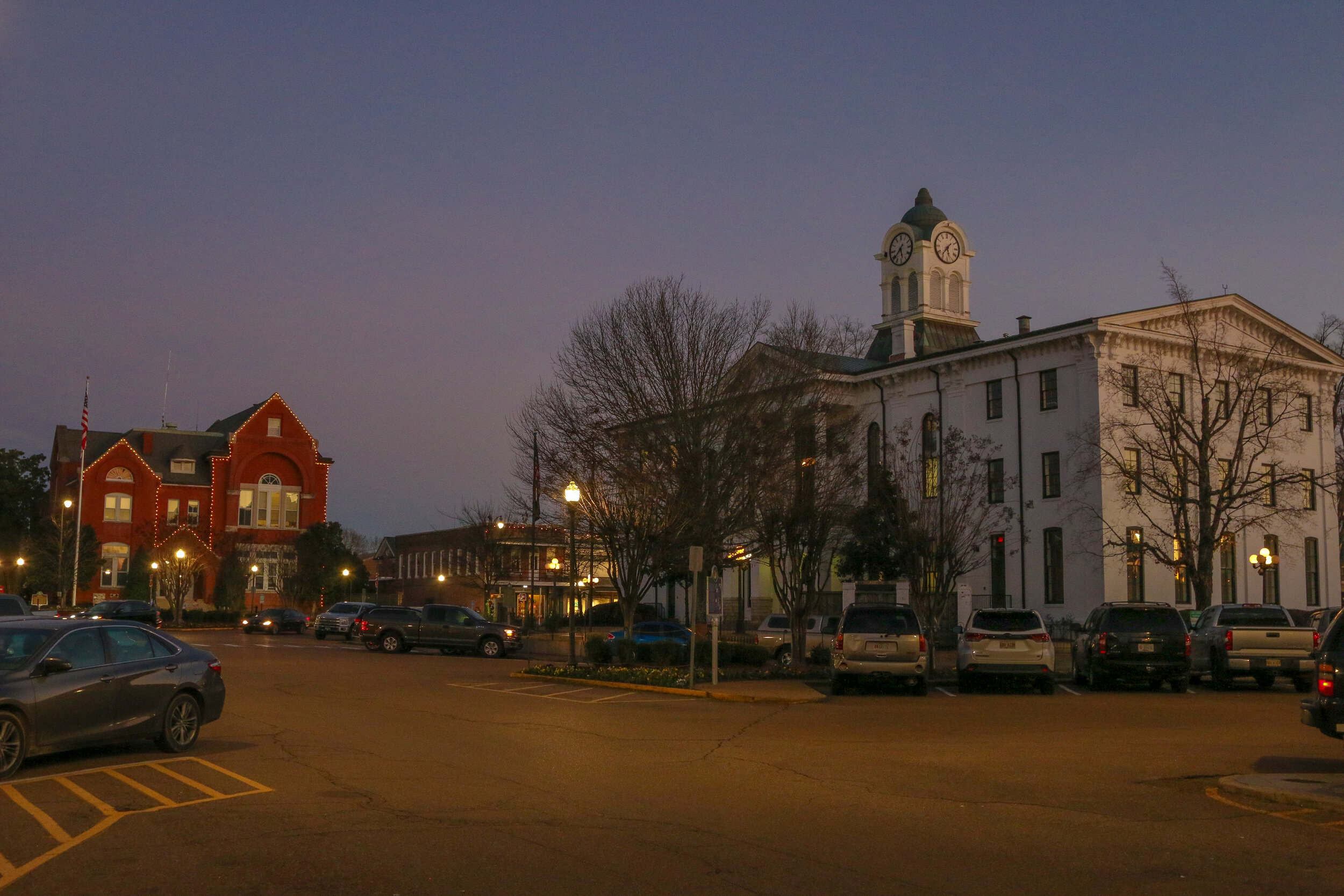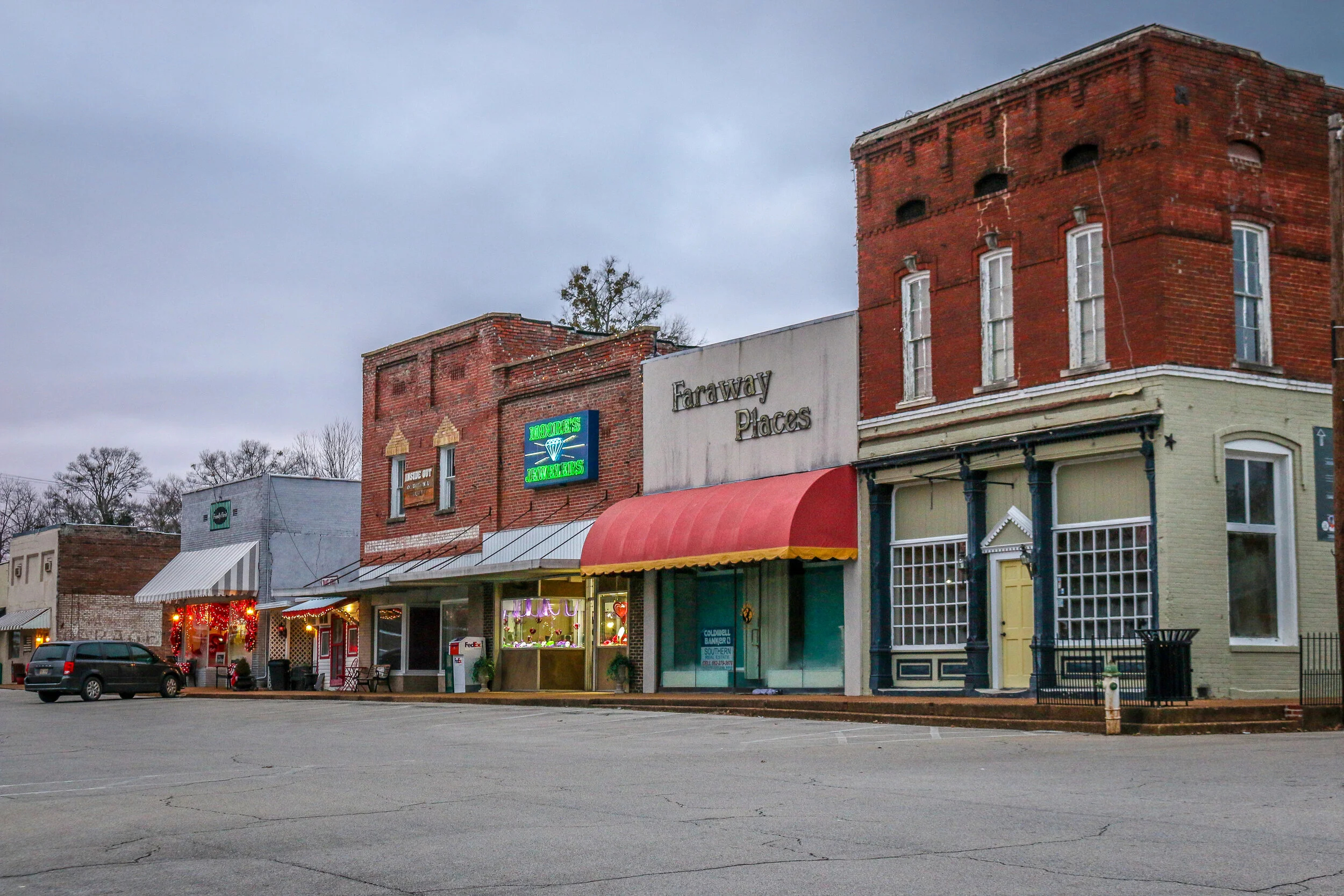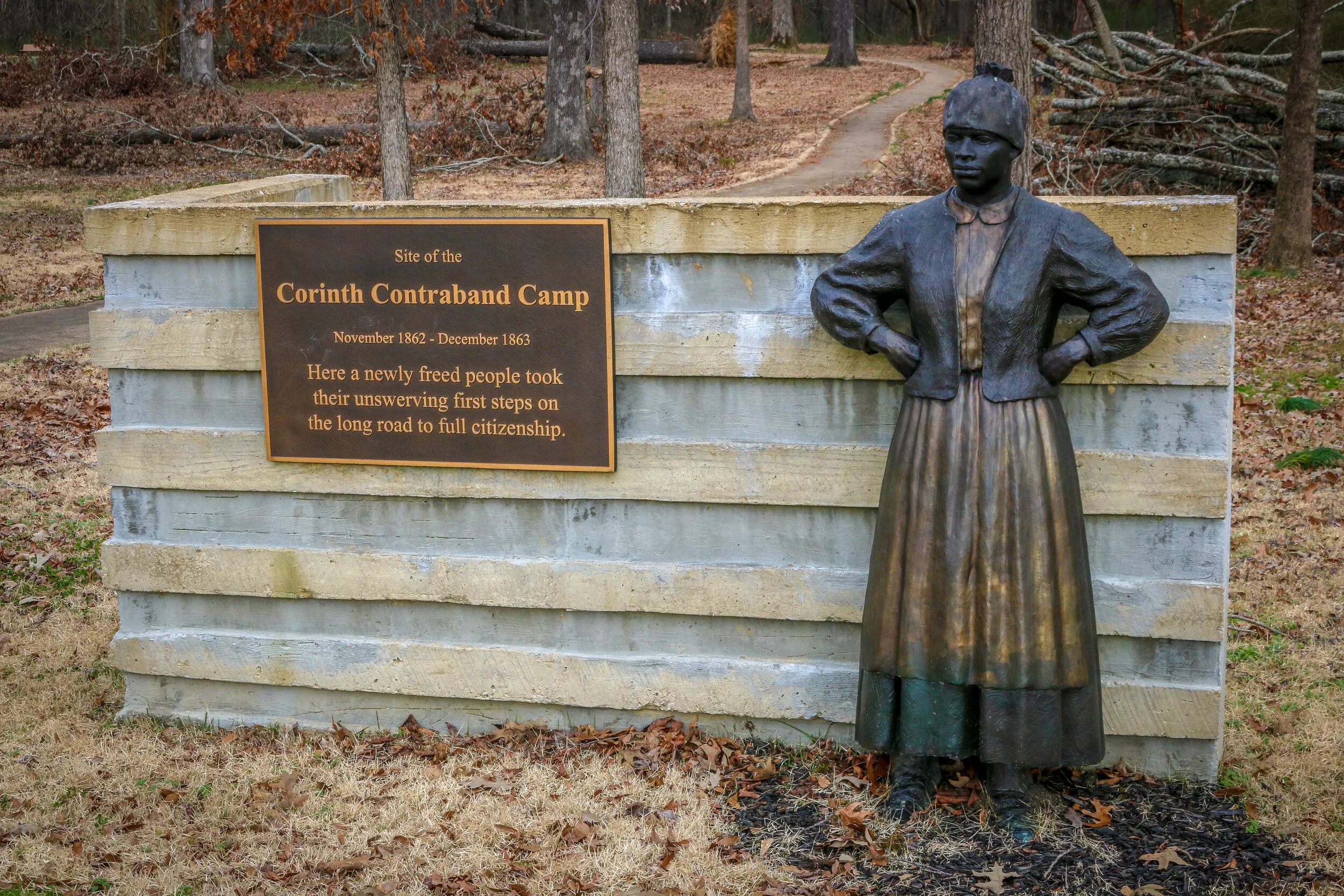The Square has been the heart of the town of Oxford since the town was founded back in 1837. The county which surrounds it was named Lafayette after Revolutionary War hero Marie-Joseph Paul Yves Roch Gilbert du Motier - the Marquis de Lafayette. Oxford took its name from the English home to Oxford University in the hopes it would help secure them a new state university, which it did in 1848 when the University of Mississippi or “Ole Miss” opened its doors. Ole Miss shut its doors during the Civil War when 135 of its 139 students enlisted in the Confederate Army. Sadly, all 135 were killed, most in the battle at Gettysburg. The town was occupied by Union forces during the war, and much of it was burnt to the ground in 1864. The town and university were rebuilt after the war, and both would go on to thrive, creating one of the wealthiest and most vibrant communities in the State of Mississippi. Today, The Square is still the heart of town and university life, with restaurants, shops, bars and one of the best bookstores in the country. I had a great visit to Oxford, and really fell in love with the photogenic central square. I hope you enjoy these photos of beautiful Oxford Square. Click on any image to enlarge it, and please contact me if you are interested in purchasing or licensing any of these images.
Viewing entries in
Mississippi
Hi Everyone, I hope this week’s This Week finds you all well. It’s almost February and I see spring at the end of the tunnel. It’s been a good week out here on the road, my first full week in Mississippi, with plenty of things to keep me occupied. I’ve visited some cool small towns, learned somefascinating history, eaten at some wonderful restaurants and caught up with friends old and new. It’s been good to be back on the road. Before I get started recapping my week for you, I want to give a big Thank You Shout Out to Todd, one of my subscribers, who sent me a huge list of recommendations for my time in Mississippi. Many thanks, Todd, your recommendations will come in really handy in the weeks ahead.
After leaving y’all last week, I did make my way out to the tiny town of Jacinto. The town was founded in 1836 and named for the Battle of San Jacinto in the Texas Revolution. It became the county seat of Tishomingo County and a stately two-story courthouse was built. In 1869, Tishomingo County was divided into three counties, Tishomingo, Alcorn and Prentiss, and the county seat of the new, smaller Tishomingo County was moved to Iuka. The town declined to the point where the courthouse was sold for scrap. Thankfully some concerned citizens stepped in to save the courthouse and the town. Nothing is open there in the winter, but it was still neat to wander around the courthouse and some of the buildings. It was really quiet and pleasant and there are a few houses and cars around so it’s not quite a ghost town, but it’s close. I did get a bit of a scare when I stood on my tip-toes to get a glance through the window and saw a life-like mannequin inside the courthouse. My heart jumped out of my chest.
From Jacinto, I headed down to Brices Crossroads Battlefield and wanted to visit the small Mississippi’s Final Stands Interpretive Center but unfortunately they had recently sustained some tornado damage…
It’s always interesting to me to find how interconnected history can be. I never thought in a million years when I pulled into tiny Iuka, Mississippi that I would end up stumbling into the summer home of Colonel Robert C. Brinkley, the builder of the famed Peabody Hotel in Memphis. I found it even more interesting that it was this house which served as the headquarters of Ulysses S. Grant during the Civil War. This story sent me down a lot of rabbit holes, but I found the whole thing really fascinating.
Robert C. Brinkley, or “R.C.” as he was known, was born in Chatham County, North Carolina in 1816. He studied law at the Bingham School in North Carolina and moved to Tennessee when he was 20 and went to work as an attorney. Two years later, he married Ann Overton and they would have two children together. When Ann passed away in 1845, R.C. left his law practice and started focusing on real estate. He went on to become the president of the Memphis branch of Planters Bank, and began selling stock in the Memphis to Charleston Railroad.
It was during this time that R.C. traveled to London to try and raise money to purchase the rails necessary to complete this line. There, he met and befriended banker and financier George Peabody (whose finance business would be renamed J.P. Morgan after his death…
The tiny town of Iuka, Mississippi (population 3,000) was founded by David Hubbard in 1857 along the route of the Memphis and Charleston Railroad. Built on the sight of an old Chickasaw Indian village, the town takes its name from one of the chiefs of that village, Chief Ish-ta-ki-yu-ka-tubbe . Iuka (pronounced “aye-you-ka”) was the site of the Battle of Iuka during the Civil War, an engagement between Union General Rosecrans’ Army of the Mississippi and Confederate General Sterling Price’s Confederate Army of the West. The battle resulted in over 2300 casualties before Price withdrew his troops and marched on to join General Van Dorn in the 2nd Battle of Corinth. The Brinkley House, also called Dunrobin, was used as General Grant’s Headquarters during the battle, and is a really cool antebellum home.
Today, Iuka is a charming little town with a cute downtown area and a wonderful park. The park’s centerpiece is the Iuka Mineral Springs, where natural spring water flows for all to enjoy. I really liked this park for some reason and enjoyed taking photos of the old playground equipment which reminded me of the things I played on when I was a kid. Iuka has a beautiful War Memorial and a history museum in their old courthouse which was sadly closed during my visit. There were also several beautiful churches and some neat looking shops. Much like my visit to Corinth, short days and cold weather kept me from exploring too far afield, but I thought Iuka was an adorable little town and that these photos would give you a feel for my visit.
Corinth was my first stop in Mississippi. I came to learn more about the Mississippi side of Shiloh National Military Park history, and to see the infamous rail crossing which was of such strategic importance during the Civil War that both sides suffered enormous casualties trying to secure it. I also wanted to learn more about the “Contraband Camp” which grew from enslaved people fleeing behind Union lines. You can see my photos from the Tennessee side of the battle HERE and from the Contraband Camp HERE. I thought both were really interesting, but while I was in town I thought I would have a wander and take a few photos. The weather was overcast until right before I left, and it was really cold out and dark by 5, so I didn’t get to see as much of it as I would have liked. I know there is a lot more to Corinth than these photos, but I still thought I would share them with you here. It was a beautiful town with a fascinating history and definitely worth a visit. Corinth was originally called Cross City when it was founded in 1853 at the crossing of the Mobile & Ohio and Memphis & Charleston railroads and is today home to about 15,000 people.
Hey Y’all,
It is great to be back on the road and it is great to be back writing This Week on the Road. I’ve missed you all, and this weekly post and this journey. While it was definitely good for me mentally to go back to work for a few months and then spend some quality time with my friends and family back at home, I feel really good and very blessed and happy to be back on the road.
I left home in Washington DC last Thursday and aimed for my dad’s place in Charleston, West Virginia. It was a cold and windy ride through the mountains, and snow whirled and blew as Shadow Catcher and I made our way west. The winter blast made me happy we were heading south and it felt good to have months ahead of us and only our plans and our wits to guide us. It was wonderful passing through and past some of the earliest destinations of this journey when we first set out way back in November of 2017. It was cold then too and the days were short, and my dad’s place was definitely a point of refuge as I got all of this off the ground. But driving past exits for Blackwater Falls and Weston and Morgantown and Harpers Ferry all brought a huge smile to my face. We’ve come a long way since then and it was good to take a drive down memory lane.
I spent 2 days with my Dad and Judy, and it was great to catch up with them and enjoy their company. I helped them with a few things around the house and they took me out to a nice meal. It’s always great to see them, and it was my last taste of home for a while.
We set off from Charleston on Saturday, headed west into Kentucky and then south from Lexington into Tennessee. This ride took us past even more wonderful memories from this journey…
The Corinth Contraband Camp was established in the wake of the Battle of Shiloh and the subsequent occupation of Corinth by the Union Army. Enslaved people in the area fled behind Union lines, seeking safety from their masters with the Union Army. The army saw the strategic value in providing these people a safe haven. The former slaves were put to work to aid the war effort, and were paid for their time and allowed to pursue an education with missionaries who came from the North. They built homes and gardens for food and even planted cotton to aid the Union Army. Many young men who made their way to the camp enlisted in the army – first used as cooks and laborers and later armed as the 1st Alabama Infantry Regiment of African Decent (later the 55th U.S. Colored Troops). These troops were used in combat at Brices Crossroads and Waterford in 1864. The camp was a model for others of its kind springing up across the South. It was the first step for these people on their road to freedom. More than 6,000 people passed through the Corinth Contraband Camp during the year it was operational. The camp was abandoned in 1864 as Union efforts consolidated in Memphis, and not much remains there today. The open site is part of Shiloh National Battlefield, and the wonderful sculptures in these photographs were produced by Larry Lugar, a sculptor from nearby Memphis. I think they are wonderful depictions and show the determination these newly freed people showed under adverse conditions during their time there. It might not have been paradise, but for the first time in any of their lives, they were free.








